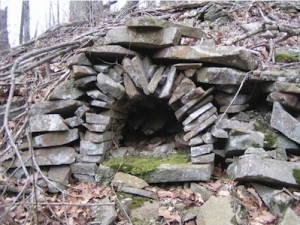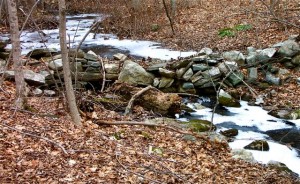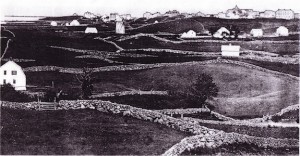
We think we know more about stone walls than we actually do. It’s surprising how little data-based science there is about stone walls across a variety of scales. This statement includes my three books as well, none of which were based on hypothesis-driven, site-specific investigations. For example, consider these questions:
- How much stone wall is there in New England?
- Do walls come in different types?
- Is there such a thing as an average wall?
- What organisims use them as habitat?
- Are there pre-European stone walls and structures in New England?

Questions like these can presently be answered only by sweeping generalizations, crude estimates, or anecdotal, case-by-case scenarios. And now the answers, number for number.
- We really don’t know how much wall there is, because the only good census was taken in 1871, this was anecdotal, and many of those walls have been destroyed since. However, we are likely to have a good estimate within a decade, thanks to the combination of GIS and LiDar mapping.
- Yes, walls come in many distinct types. The classification in progress is provisional, and has yet to be tested and improved by teams of field scientists.
- An average wall? Not really. There is no such thing as an average wall. As with the “average animal,” the phenomenon is too broad to yield a meaningful average. We must first classify walls into taxa, and then averages become very meaningful.
- We have anecdotal reports, for example chipmunks and garter snakes. But census-based research is generally lacking.
- Yes. Ad hoc expedient walls would have made excellent hunting blinds and expedient enclosures to provide protection against the elements. The problem is we haven’t yet dated them. Cosmogenic exposure age dating methods, for example 10Be, and 26Al may help. For review, consult Our Hidden Landscapes: Indigenous Stone Ceremonial Sites in Eastern North America edited by Lucianne lavin and Elaine Thomas.
Investigation is the most under-served of the four major goals of the SWI. Having made more progress on other fronts, the time has come to do more scientific research on the phenomenon. If you have something to add, don’t hesitate to contact the SWI. For in-progress investigations, link to:
